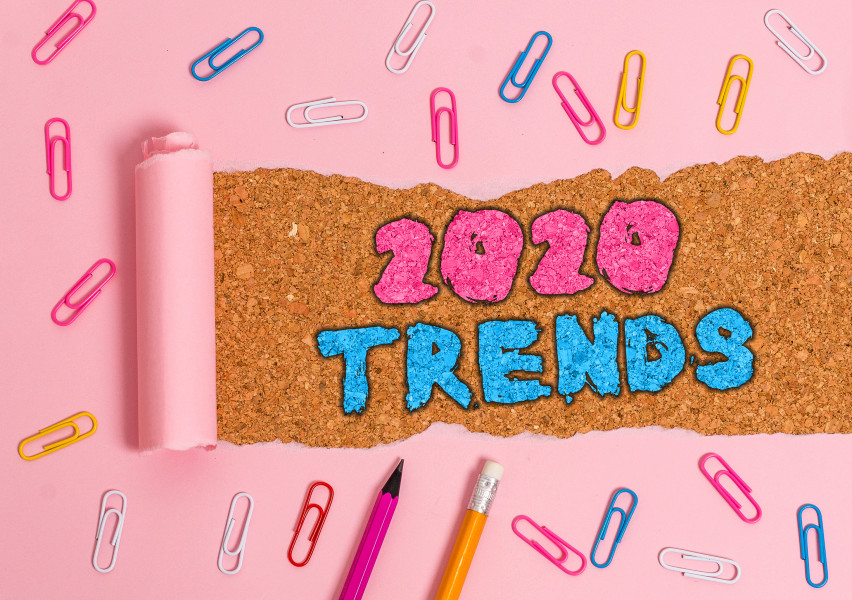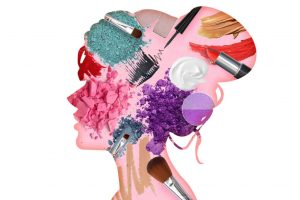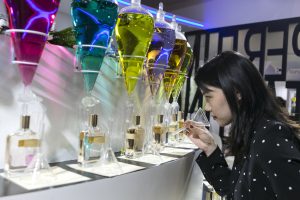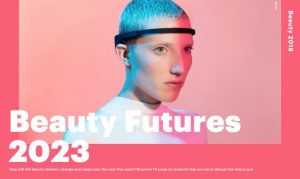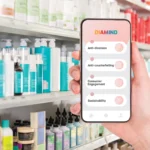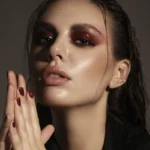A summary of the strongest influencers of the markets. Brand and social network performances along with inspirations for the coming year.
At the beginning of every year, experts in the Fashion and Beauty industry to get involved in a tricky game, which is intended to summarise what have been the main happenings of the year just ended and forecast trends for the new year.
It is hard to make predictions, so to make your guesswork a little more informed we have collected some material (from influential sources) that might give us some hints about what is going to happen next year, or most probably will tell us how big players will try to influence our choices.
To this purpose we are just going to quote some sources, leaving you all the fun to compare these ideas and numbers and make up your mind.

Pilotfish Media
2019 Trends Report
One way to look at the choices and preferences of the public is to check the statistics of the most popular Social networks, as they can give us a taste of what consumers truly fancy.From Instagram to Tik Tok to YouTube, these are the virtual locations for beauty brands to converse with loyal fans and be discovered by new ones.
Pilotfish Media has released “The 2019 Social Influence Index,” a report that examines social media platforms— like Facebook, Twitter, Instagram and YouTube — and accounts of popular fashion and beauty brands.
5 Most Influential Beauty Brands of 2019 (and total following)
- Huda Beauty — 50,246,498
- Maybelline New York — 45,735,845
- MAC Cosmetics — 44,766,726
- L’Oréal Paris — 42,942,797
- Sephora — 40,789,190
According to the report, the most followed on Facebook is L’Oréal Paris, while on Twitter it is Sephora, and on Instagram and YouTube it is Huda Beauty.
For the full index see www.pilotfishmedia.com

Cosmetify
Cosmetify has released its Q4 report with its new The Cosmetify Index 2019, which provides an overview of the hottest brands in beauty for 2019. The index also reveals which brands have the largest social media followings, the best engagement with followers and the most online searches.
2019’s hottest beauty brands*
*As determined from Google Trends rankings, monthly brand searches, Instagram tags and followers, and Instagram engagement.
- Huda Beauty
- Anastasia Beverly Hills
- MAC Cosmetics
- Yves Rocher
- Florence by Mills
- Kylie Cosmetics
- Jeffree Star Cosmetics
- Rude Cosmetics
- Maybelline
- Foreo
2019’s rising stars of beauty
- Kristen Ess
- Jeffree Star
- Ole Henrikson
Most powerful beauty influencers of 2019
- Huda Kattan
- Millie Bobby Brown
- Kylie Jenner
Most searched brands globally of 2019*
*By average monthly searches (as reported by Cosmetify)
- Yves Rocher — 2,169,320
- The Body Shop — 861,020
- Clinique — 757,710
- Estée Lauder — 600,280
- Maybelline — 581,110
- Glossier — 538,110
- Dove — 450,000
- Kylie Cosmetics — 434,650
- MAC — 423,560
- Huda Beauty — 395,690
Most searched brands within product groups
*By average number of monthly searches
- Brows: Glossier — 27,100
- Eyeshadow: James Charles — 673,000
- Mascara: Maybelline — 135,000
- Eyeliner: Maybelline — 40,500
- Highlighter: Becca — 50,000
- Blusher: MAC — 18,000
- Foundation: Estée Lauder — 201,000
- Lipstick: MAC — 165,000
- Perfume: Lancome — 450,000

Kline
A look into the near future
A very thorough analysis has been made by the Kline group, which published a report named “What’s Next in Beauty: A Look into 2020 and Beyond,” which highlights seven trends expected to impact the future of this ever-changing industry.
7 Key Industry Trends
- Personalization: From beauty devices to smartphone apps, technology is expected to play a key role in driving bespoke beauty experiences.
- CBD-based beauty: Consumers have welcomed CBD into their beauty routines with open arms. Moving forward, marketers are being urged to educate shoppers about the properties of CBD in order to reach new boundaries with cannabis.
- Intimate skin care: Kline reports that products trending in the facial skincare segment, such as serums and oils, are also gaining momentum in the vaginal care segment.
- Beard care is booming: Beard care products are the most impactful in the male grooming segment. According to Kline, beard services revenue has increased by 38% and transactions are up 37%.
- Industry compliance around sustainability and transparency: Key markets for natural personal care products, such as the United States and Canada, increased by 10%, according to Kline. The report also adds that “sustainability” and “transparency” are buzzwords with which the industry is complying.
- Amazon and Tmall: Online beauty retail offers consumers convenience and exclusive digitally native brands. Retailers such as Amazon and China’s Tmall are two of the biggest e-commerce giants affecting the beauty and personal care industry.
- Indie beauty brands continue to disrupt: Kline states that these brands often find success with consumers by “entering the market with unique offerings, plus interesting founder stories and hero ingredients, becoming cult favorites.”
A forecast from Nielsen
A more comprehensive opinion on market trends, not limited to the cosmetic industry, comes from one of the most reliable statistics agencies in the world. Nielsen predicts transparency will be a necessity for consumer packaged goods (CPG) in 2020, as a result of low trust levels in today’s society. Trust encompasses company aspects like brand credibility and an organization’s operational footprint.
Highlights
- Brands will have to counteract consequences and misinformation that result from social network attacks to protect their credibility
- Consumers’ interest in the “behind-the-scenes” of company operations is growing, and brands should consider their “Healthy for Me and Healthy for We” expectations
- Manufacturers will see an increase in the pressures to produce locally, as consumers display an increasing desire for sustainable products
- Supply chains will see success based on the granularity and end-to-end depth of their data science, rather than through front-end pricing and promotional tactics
- 5G will become a mainstream reality and transform smart packaging with applications, while also allowing consumers to come to an informed decision about brands through data being available almost instantaneously
- Speed and convenience will drive consumer behaviors through intuitive tech-driven retail experiences, like cashier-less pop-up shops and automated warehouses
- Augmented reality (AR) technologies will allow consumers to try products at home before purchase, with 5G improving its accessibility; AR can improve in-store experiences with special promotions available through smartphones
“The true value of today’s emerging technologies has remained in the hype cycle for much of retail and CPG, but the dawn of a new decade will see a rapid acceleration in meaningful use cases,” said Jeanne Danubio, president, Nielsen Connect, North America. “From the transformative effect of 5G to the increase in frictionless commerce—all underpinned by trust and transparency—the consumer landscape will become increasingly complex. We are eager to continue providing our clients with the data to decide, thereby shaping a smarter market for our clients, in 2020 and beyond.”

Facebook IQ’s 2020 Topics and Trends Report was released with an expansion from solely looking at U.S. trends to the trends that surfaced in 13 additional countries in four regions. Topics and trends in this report span across six categories: art and design, beauty and fashion, food and drink, mind and body, entertainment and travel and leisure: and apparently are quite on the same page with the Nilsen report.
The overarching trends Facebook IQ has forecasted for 2020 focus on five topics:
- Acting greener: pushing for sustainability through small lifestyle changes
- Changing the channel: using new platforms and mediums for art and entertainment
- Getting hands-on: increased participation in tactile activities
- Going back to basics: returning to minimalistic products and routines
- Making everyday moments special: turning everyday rituals into micro-moments of excitement

